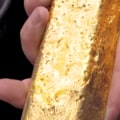However, the lustrous and metallic qualities of gold, its relative scarcity and the difficulty of extraction have only increased the perception of gold as a valuable asset. As engineers began to perfect metallurgical techniques, gold became a permanent presence in the world's currency. Ancient Egyptian goldsmiths formed the shekel, which was an alloy of one-third silver and two-thirds gold. It became the main unit of monetary measurement in the Middle East.
Today, gold is still seen as a valuable asset and is often used to invest in a Best rated Gold IRA. One of the reasons gold still has value is because people have made it valuable. Gold can be considered more valuable than other metals because people perceive it as more valuable. This belief comes from the psychology of human beings and their desire to accumulate wealth, tangible assets and precious metals, among other things. Gold also has several financial advantages compared to other assets.
Gold has no time limit or lifespan; most of the gold found still exists. Gold is also portable and divisible; dividing it doesn't change its value, unlike other metals, such as diamonds. Finally, gold cannot be counterfeited or inflated; central banks cannot reproduce gold as they do with fiat currencies. Under such circumstances, savers once again notice the reliable rarity of gold.
Its great use is as a substitute for money when artificial forms of money (which are much more common) are not adequately restricted in their supply. In those times, the immeasurable supply of gold makes it a much more reliable reserve of purchasing power than currency. Nothing does this job as reliably and as well as gold, because nothing matches the irreproachable rarity and stability of the supply of gold above ground. As gold became more entrenched in world currencies, many countries began to back their money with the amount of gold their country could produce.
The first civilizations equated gold with the gods and rulers, and gold was sought in its name and dedicated to its glorification. In the 17th century, many English citizens had homemade mints on which they marked their gold coins with the percentage of pure gold found in them. Ancient Egypt also had a famous fondness for gold, since it coated the domes of the pyramids with gold and used clay bins to heat smelting furnaces and process gold ore. By the 17th century, gold production had advanced, and royal mints stored the gold reserves that merchants had acquired.
Gold is also very rare, if all the gold in the world were to melt, it would fit within the confines of an Olympic swimming pool. During the gold standard era, anyone could go to a bank and exchange paper money for a certain amount of gold. However, currently more than 95% of the world's gold is kept as a repository of wealth, either in ingot vaults or as jewelry, which is generally considered a private monetary reserve (especially in India, the world's largest gold customer). After King Charles I of England confiscated a large amount of gold as a forced loan, merchants and merchants began to store their wealth in private goldsmiths in London, who were formerly engaged in storage, lending and trading in the gold market.
In the 16th century, the discovery of South America and its vast gold deposits caused a huge fall in the value of gold and, therefore, an enormous increase in the price of everything else. The “classic” gold standard was adopted in 1879 and further consolidated in 1900, while the United Kingdom officially defined the pound sterling in relation to gold in 1816. Having greater control over the purity of the metal paved the way for accurate evaluations of gold and was a key step forward in the transition from gold as a show of value to easily divisible means of exchange to represent economic influence. .



